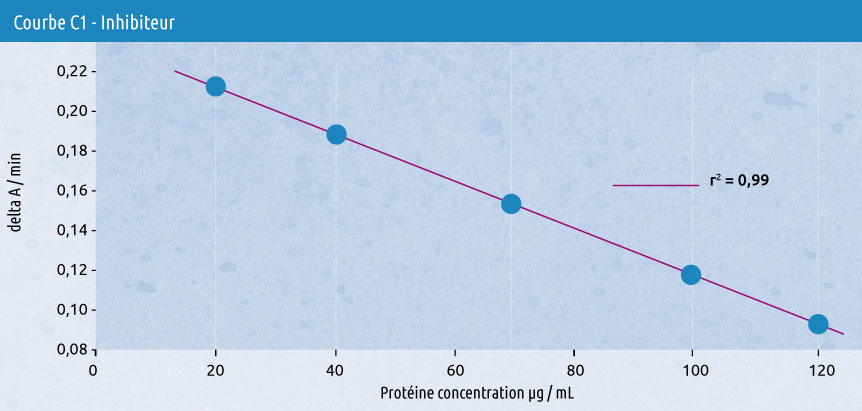The C1-esterase inhibitor (C1-INH) is a regulatory protein that functions as an inhibitor of several serine proteases in the complement system, the kallikrein-kinin system, the coagulation cascade and in fibrinolysis.
The C1 complement esterase inhibitor (C1-INH) is a serum protein whose major role is the regulation of the classical complement pathway, by inhibiting activated C1r and activated C1s. It also has an inhibitory role in coagulation, fibrinolysis and the kinin system, acting on kallikrein, plasmin, trypsin, chymotrypsin, FXIIa and FXIa. Type I OAH, which accounts for 80 to 85% of patients, is inherited autosomal dominantly, so it is expressed in heterozygotes.
The mutated gene induces a decrease in C1-INH protein, which is collapsed at the time of seizures.
Type II OAH, which represents 15 to 20% of patients, also corresponds to an autosomal dominant abnormality, but in which the mutation leads to the synthesis of a non-functional protein present at normal or high levels; Functional C1-INH assay alone can confirm the diagnosis.
C1-INH is a normalizing protein that functions as an inhibitor of several serine proteases in the complement system, the kallikrein-kinin system of the coagulation cascade and in fibrinolysis.
This method is based on the inhibition of an excess but constant amount of C1 esterase by the C1-INH / C1 esterase complex and then by the hydrolysis of a chromogenic substrate by the residual C1 esterase.
The quantity of para-nitroaniline released during this hydrolysis is measured at 405 nm and is inversely proportional to the concentration of C1-INH present in the reaction medium. (Specialized hemostasis)
- IVD for in vitro diagnostic use
- Each single donor plasma and each lot of Coagulation Control are tested and found negative for HbSAg, HIV 1/2 Ab and HCV Ab. However, universal precautions (treating all human source materials as if potentially infectious) should be exercised.
- 1 vial x C1 inhibitor substrate (3 mL)
- 1 vial x C1-Esterase (3 mL)
- 1 vial x test buffer A (25 mL)
- 1 vial x reaction buffer B (20 mL)
- 1 vial x Coagulation Reference (1 mL)
- 1 vial x Coagulation Control A (1 mL)
- 1 vial x Coagulation Control N (1 mL)

























